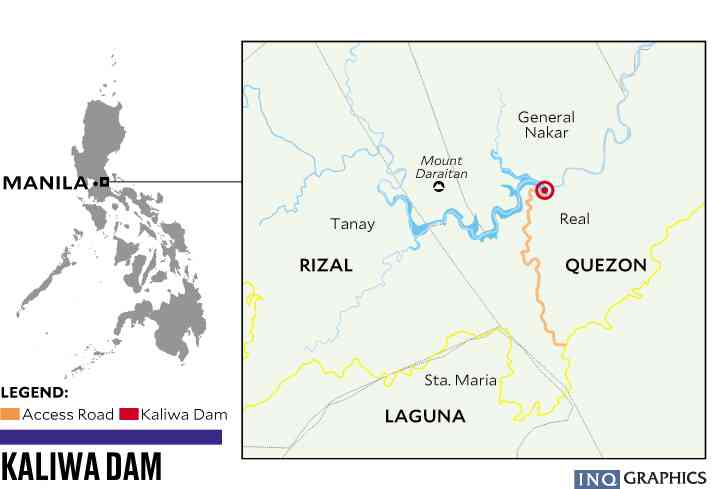
LUCENA CITY — Members of environmental groups have asked President Rodrigo Duterte to stop the construction of the P19-billion Kaliwa Dam in the Sierra Madre mountain ranges, saying the project would displace communities in Quezon and Rizal provinces.
In an open letter to the President on Tuesday, the Save Sierra Madre Network Alliance Inc. (SSMNA), Alyansa Laban sa Kaliwa Dam, Task Force Sierra Madre and Tribal Center for Development said: “If you [the President] really care for the environment, you will not sign for the construction of the Kaliwa Dam.”
The construction of the Kaliwa Dam was awarded to the Chinese firm, China Energy, under the Official Development Assistance scheme.
The contract signing between China Energy and the Metropolitan Waterworks and Sewerage System (MWSS) for the dam projects component of its New Centennial Water Source Project (NCWSP) will be witnessed by Chinese President Xi Jinping when he visits the country this month, reports said.
Metro water supply
On its website, the MWSS said NCWSP would involve the construction of a dam at Kaliwa River (Laiban Dam), and a smaller dam (Kaliwa Dam) downstream to maximize the water supply, and to ensure short- and long-term supply for Metro Manila and its nearby areas.
The project would submerge parts of the Sierra Madre in Tanay town, Rizal; and General Nakar and Infanta towns in Quezon.
The dam is expected to flood a watershed area of 9,700 hectares and affect 1,465 families, according to studies conducted by SSMNA.
Groups opposing the project also fear that it will endanger more than 100,000 lives once the dam is built.
‘Baseless’
“While Manila is now preparing for the ‘Big One’ earthquake [at] Marikina West Valley Fault, the proposed . . . Kaliwa Dam will be constructed within a zone of two active tectonics—the Philippine Fault Zone and the Valley Fault System,” the groups said in the letter.
They said the Philippine Fault Zone “has a potential to cause very high seismic activity, as what have been recorded in the July 18, 1880 earthquake where the old churches of Infanta and Mauban towns in Quezon province and Manila Cathedral were devastated.”
But in a television interview this week, MWSS Administrator Reynaldo Velasco said the fear of dam critics was baseless.
“It’s only in their minds. This [project] will be handled by consultants who will really look up the proper construction for the dam,” Velasco said.
Transparency
Fr. Pete Montallana, SSMNA chair, urged government agencies to strictly observe transparency, saying the project threatened human lives and the natural habitat of indigenous peoples.
“Put the welfare of the people of today and of the next generation over and above any monetary considerations,” said Montallana, also coordinator of the Indigenous Peoples Apostolate of the Prelature of Infanta.
Ramcy Astoveza, Agta tribe chieftain and a commissioner of the National Commission on Indigenous Peoples, said their tribe would not issue its free prior and informed consent to the project.
“The dam project is a matter of life and death for us. Once we allow the dam inside our natural habitat, what would follow is the death of our tribe,” Astoveza said in an earlier interview.
The MWSS has long been pushing for the construction of the dam projects to address a projected water crisis in Metro Manila.
But Montallana, citing a study from groups led by Freedom from Debt Coalition, said: “Metro Manila’s water crisis has nothing to do with a deficit in water supply, and everything to do with wasteful water management practices.” —Delfin T. Mallari Jr.